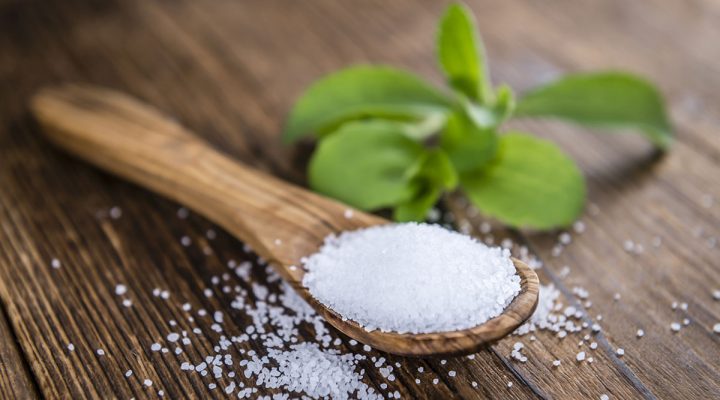Judd Hoffman, Cargill’s segments leader of Cargill Starches, Sweeteners &
Texturizers talks to Editor Caroline Calder to find out more about meeting the growing demand for label-friendly ingredients.
Worldclass ingredients
Cargill Starches, Sweeteners & Texturizers sector processes corn, wheat, seaweeds, fruit-peels, sunflowers, rapeseed and soy to manufacture a comprehensive collection of value-added ingredients dedicated to the food & beverage, papermaking & corrugating, pharmaceutical, and animal nutrition industries. They take a unique approach to each of these categories to enhance customer relationships and fuel sustainable growth, say the company.
Nutrition
In the nutrition space, the company focuses on fiber and protein innovations, while industrial offerings are designed to supply renewable solutions that drive value for our customers. The portfolio includes sweeteners: glucose syrups, glucose-fructose syrups, dextrose, low-caloric polyols and zero calorie stevia-based sweeteners, starches: native, functional, modified, maltodextrin, lecithins (fluid, de-oiled, fractionated and modified), carrageenans, pectins and biopolymers (xanthan and sclerogucan).
FJF: Label friendly – what is your definition of label friendly for the sector and what products have you developed specifically for the fruit juice industry?
JH: Consumers want to understand what is in their food and familiar ingredients are growing in popularity. These types of ingredients which are nature-derived and simple – mean for us label friendly solutions.
At Cargill, we’re approaching the label-friendly challenge from two angles. First, we’re investing in research and development, charging all our teams to take a creative look at the botanical sources available to us. We’re coupling that work with our extensive formulation expertise, partnering with our customers to re-think their recipes.
Understanding customer needs in combination with high-level reformulation expertise ensures that Cargill can deliver tailor made solutions. Often, it’s a combination of ingredient know-how, recipe reformulation and adapting process conditions.
Clean label is now part of nearly every manufacturer’s agenda, irrespective of category, and so will only continue to garner more attention as this is what consumers have come to expect.
FJF: How does Cargill respond to the relentless drive towards sugar reduction or sugar alternatives whilst maintaining flavour/taste/structure?
JH: Sugar reduction is indeed on top of manufacturer’s reformulation agenda for the years to come. In this sense, we notice:
A move to include more nature-derived high intensity sweeteners, to reach both sugar & calorie reduction.
Stevia is fast becoming a desired go-to-solution as it’s a label-friendly sugar reduction tool. Stevia-related market activity has increased, with a high double-digit growth year on year in beverage launches with stevia (CAGR of 22% between 2013-2018, source; Innova, 2019).
Cargill has proven solutions to reach sugar reduction of up to 70%, by using Truvia™ and/or ViaTech™ and/or Zerose™ (our zero calorie polyol). This is an ideal combination as Zerose™ can mask off-flavours that can occur at higher dosages.
A shift to different types of glucose-(fructose) syrups
Not contributing to calorie reduction, but a good solution to gradually start making consumers more familiar with less sweet tasting products. Due to their composition they are less sweet and allow lower sugars declaration on labels.
At Cargill, we continue to expand our nature-derived sweeteners offer, a deliberate choice, as we stand behind 100% plant-derived solutions. Our stevia offering is one of our key areas today and in the coming years, with the ultimate goal to reach 100 percent sugar reduction. Combined with our texturizing solutions and R&D capabilities, we can help customers bring their innovative ideas to live.
FJF: Any technological or scientific highs we can refer to that the company is most proud of in recent years
JH: Stevia solutions – Truvia™ and ViaTech™ can offer sugar reduction of up to 70% and are often used in combination with Zerose™ erythritol.
Extracted from the leaves of stevia rebaudiana, they deliver 200 times the sweetness of sugar without a single calorie. The Cargill IngredienTracker™ proprietary research has proved stevia to be well perceived by consumers, particularly among younger demographics. It is therefore fast becoming a go-to solution as it offers a label-friendly zero calorie option.
Besides the significant improvements in sweetness quality, part of what sets the ViaTech™ portfolio apart from other stevia sweeteners is Cargill’s proprietary taste-prediction model, which can precisely predict which combination of steviol glycosides deliver optimal taste and sweetness.
Our zero calorie polyol, Zerose™ erythritol, unlike other polyols as it is obtained through the traditional process of fermentation and has a caloric value of 0 kcal/g. Zerose™ creates synergy with high-intensity sweeteners, masking off-flavors that can occur at higher dosages and boosting taste. Other benefits are the highest digestive tolerance of all polyols and it is certified as ‘tooth friendly’ by Toothfriendly International.
FJF: What’s new at Cargill?
JH: Cargill has just announced it will break ground this year on the construction of a state-of-the-art pectin plant in Bebedouro, Brazil, with a completion date by end of 2021. It will produce HM pectin, a versatile texturizing agent derived from citrus fruits to help meet the growing and global demand for label-friendly pectins for fruit preparations, dairy, confectionery and bakery food applications.
JH: “Consumers want ingredients in their foods they recognize. Pectin a nature-derived texturizer with superior functionality helps to meet these needs. The investment in Brazil in combination with our European pectin facilities illustrates our commitment to customers around the globe to provide innovative and label-friendly solutions.
“Adding a new plant in Brazil is part of our comprehensive pectin strategy. By growing our pectin footprint and investing in our plants in Europe (France, Germany and Italy), we aim to meet the growing demand for label-friendly ingredients. In this context we are also announcing the modernization of our pectin plant in Redon (France).”
The Bebedouro location (Brazil) is in the center of the citrus region, offering an abundant supply of fresh peels needed to produce HM pectin. The construction of the new unit will begin in the first half of 2019 and expected to be completed by end of 2021. It is expected to add 120 new direct jobs in the production and support areas.
“With a cost-competitive structure based on innovative production processes, the new plant only further strengthens Cargill’s commitment to Brazil’s growth,” commented Laerte Moraes, Cargill’s managing director of Starches, Sweeteners and Texturizers in South America. “The new plant represents an investment of approximately US$150 million. This will not only open global market possibilities for our pectin business but also boost the innovation of our portfolio and offers the option to expand our high-end pectin offering for the European markets.”
Cargill History
Minneapolis-based Cargill was founded at the end of the American Civil War around 1865, by William Wallace Cargill. The company has grown from a grain storage facility into an international producer and distributor of agricultural products such as sugar, refined oil, chocolate and turkey. Cargill also provides risk management, commodities trading and transportation services. Descendants of William Cargill and his son-in-law John MacMillan have owned common equity in the company for over 140 years. Cargill employs 140,000 people in 67 countries.
www.cargill.com






